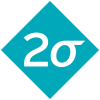Schedule: Kernels sessions
11:05am–11:45am Thursday, August 23, 2018
Location: Sutton Center/Sutton South
Level: Intermediate
Average rating:





(4.67, 3 ratings)
Sylvain Corlay, Johan Mabille, Wolf Vollprecht, and Martin Renou share the latest features of the C++ Jupyter kernel, including live help, auto-completion, rich MIME type rendering, and interactive widgets. Join in to explore one of the most feature-full implementations of the Jupyter kernel protocol that also brings Jupyter closer to the metal.
Read more.
5:00pm–5:40pm Thursday, August 23, 2018
Location: Murray Hill
Level: Beginner
 Bo Peng (The University of Texas, MD Anderson Cancer Center)
Bo Peng (The University of Texas, MD Anderson Cancer Center)
Bo Peng offers an overview of Script of Scripts (SoS), a Python 3-based workflow engine with a Jupyter frontend that allows the use of multiple kernels in one notebook. This unique combination enables users to analyze data using multiple scripting languages in one notebook and, if needed, convert scripts to workflows in situ to analyze large amounts of data on remote systems.
Read more.
2:40pm–3:20pm Friday, August 24, 2018
Location: Murray Hill
Level: Intermediate
 Randy Zwitch (MapD)
Randy Zwitch (MapD)
MapD Core is an open source analytical SQL engine that has been designed from the ground up to harness the parallelism inherent in GPUs. This enables queries on billions of rows of data in milliseconds. Randy Zwitch offers an overview of the MapD kernel extension for the Jupyter Notebook and explains how to use it in a typical machine learning workflow.
Read more.
4:10pm–4:50pm Friday, August 24, 2018
Location: Nassau
Level: Beginner
 Lindsay Richman (McKinsey & Co.)
Lindsay Richman (McKinsey & Co.)
Average rating:





(4.50, 2 ratings)
JupyterLab and Plotly both provide a rich set of tools for working with data. When combined, they create a powerful computational environment that enables users to produce versatile, robust visualizations in a fast-paced setting. Lindsay Richman demonstrates how to use JupyterLab, Plotly, and Plotly's Python-based Dash framework to create dynamic charts and interactive reports.
Read more.
Presented by
Strategic Sponsors
Premier Exhibitors
Supporting Sponsor
Diversity and Inclusion Sponsor
Innovator
Non-Profit Exhibitor
Community Partners
Sponsorship Opportunities
For exhibition and sponsorship opportunities, email jupytersponsorships@oreilly.com
Partner Opportunities
For information on trade opportunities with JupyterCon, email partners@oreilly.com
Contact Us
View a complete list of JupyterCon contacts
©2018, O'Reilly Media, Inc. • (800) 889-8969 or (707) 827-7019 • Monday-Friday 7:30am-5pm PT • All trademarks and registered trademarks appearing on oreilly.com are the property of their respective owners. • confreg@oreilly.com









